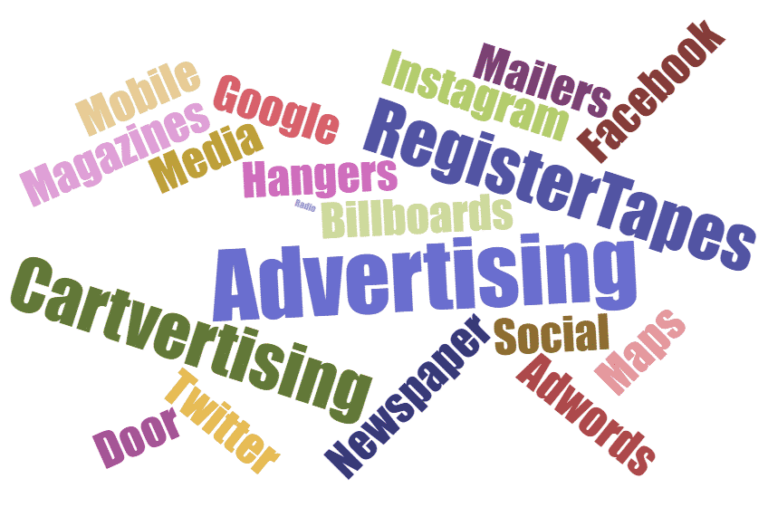What’s the Difference: Print Ads vs. Grocery Store Advertising
Print is one of the oldest tricks in the proverbial book of advertising. If we want to really trace the long-winded history of American print media, we must turn to 1729, when Benjamin Franklin first published The Pennsylvania Gazette, which included pages of “new advertisements” (incidentally, Franklin also published the first magazine ads, in 1742). But we don’t have time for that—so, suffice it to say that print media has been around as long as mass-produced content.
Personalized grocery store advertising as we know it emerged a few decades ago, as the popularity of coupons first emerged in the 1970s. Newspaper advertising dominated grocery store advertising in the ensuing years and continues to be a big force for business owners looking to reach their local community.
However, as the average consumer becomes inundated with more and more content—both print and digital—the way that he or she interacts with it has changed. For starters, the consumer has become the center of the buying equation. And about 42 percent of Americans simply don’t trust advertising these days. What does this mean? That small-business owners must ensure their efforts aren’t going unnoticed.
That’s where the difference between print ads and grocery store advertising comes into play.
While print media has the possibility to influence consumers, it’s important for business owners to target individuals in areas they know they are going to populate. Like the grocery store. To illustrate the main differences between print and in-store advertising, we’ll break down the two techniques.
Print Advertising
So, what exactly is print advertising in the 21st century? While the rise of online advertising has consistently presented new techniques to business owners, print has remained relatively unchanged over the years. Consider it the reliable workhorse of advertising. Popular media still include newspapers, magazines, banners, billboards, and flyers—and strategies remain the same for the most part.
Print advertising is beneficial when executed properly. This requires consistency and creativity, as advertising in print is not a one-and-done type of thing. Instead, it’s a long-term investment that requires businesses to deliver ads over an extended period of time. Print media also requires accurate targeting, as companies must tailor ads around demographics, geography, and consumer behavior. If messaging is not relevant to a certain type of consumer, then a business runs the risk of a wasted investment.
Print advertising demands an element of dexterity from those looking to make an investment. What do we mean by this? That business owners must be aware of the costs and ROI of their efforts. For example, large-scale billboard or banner ads may be seen by thousands of potential customers in a highly targeted area but demand large investments. Newspaper and magazine advertising, on the other hand, is less expensive but may be skimmed over.
Grocery Store Advertising
Now that you’re aware of traditional techniques, let’s review the differences between print ads and grocery store advertising. While some grocery store ads could technically fall under the category of print media, there are some differences worth mentioning. The main distinction is the placement of these ads. Let’s revisit the example of billboard advertising. For example, while business owners can dictate which billboards to place their ads on, they still can’t ensure that consumers will really read them.
With grocery cart advertising—the technique in which companies advertise in or outside grocery store carts—businesses can virtually guarantee that consumers glance at their ads. Because the average shopper visits his or her local store an average of 1.7 times per week and spends 43 minutes in the store per trip, ads are exposed to consumers more than an hour per week and more than 80 times per year. Think of these advertisements as small-scale billboards. They can be full-color and customized to make their mark by increasing brand awareness, reach, and recognition.
Receipt advertising—the technique in which businesses advertise on the back of grocery store receipts—boasts similar results. This technique enables business owners to target specific customers, products, or events—even more so than print media. Thanks to precise location targeting, combined with the possibilities of customization, receipt advertising can be personalized around specific consumers to distribute messaging to the right audience.
Now that you know the difference between print ads and grocery store advertising, what’s the best technique for you?
Both print media and grocery store cart advertising can bring benefits to your business. However, to make the most of your endeavors, it’s important to choose what’s best for you. Ultimately, small businesses profit the most from the placement, customization, and targeting possibilities of advertising in grocery stores.




